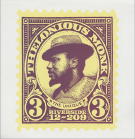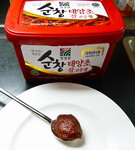| Previous :: Next Topic |
| Author |
Message |
like2thruhike
Member


Joined: 28 May 2009
Posts: 1288 | TRs | Pics
Location: Seattle |
So if it's waterproof,do you sleep in yer birthday suit?I never used one...I was just checking out the Western Mountaineering Hotsac VBL.Do you think it ads 10-15 degrees?
|
| Back to top |
  
|
 |
Slugman
Itís a Slugfest!


Joined: 27 Mar 2003
Posts: 16874 | TRs | Pics
|
 |
Slugman
Itís a Slugfest!
|
 Sun Jan 16, 2011 3:07 am |
|
|
Every time someone talks about vapor barriers I get a mental image of Leslie Nielsen and Priscilla Presley "doing it" in full-body condoms. 
|
| Back to top |
  
|
 |
grannyhiker
Member


Joined: 29 Jul 2006
Posts: 3519 | TRs | Pics
Location: Gateway to the Columbia Gorge |
Most of us who use vapor barriers sleep in our wicking base layers. You certainly don't want your bare skin next to plastic or silnylon! The wicking base layer also helps keep your skin drier inside the VBL. My vapor barrier is a suit (non-breathable rain gear), so that if I need more insulation I can put further insulation layers (such as puffy jacket) on over the vapor barrier. You certainly don't want your down jacket inside the vapor barrier getting wet!
Not everyone gets along with vapor barriers; for some it can be a sauna even when the temp is down in the teens. Everybody seems to be a bit different in this regard. I get along quite well with a VBL once the temperature gets below freezing. It does help keep my sleeping bag insulation drier.
May your trails be crooked, winding, lonesome, dangerous, leading to the most amazing view.--E.Abbey
May your trails be crooked, winding, lonesome, dangerous, leading to the most amazing view.--E.Abbey
|
| Back to top |
  
|
 |
joker
seeker


Joined: 12 Aug 2006
Posts: 7953 | TRs | Pics
Location: state of confusion |
 |
joker
seeker
|
 Sun Jan 16, 2011 10:10 pm |
|
|
Indeed. Success (not getting soaked) depends in large part on not having too much insulation outside the barrier. I have not used one for sleeping for some years, but when winter camping in New England (where it actually gets really cold), it was quite helpful, and did seem to add something like 10 degrees or so of warmth. I became a big fan for use on my feet during the day to keep boots dry and feet warm. I never had nearly as much issue with too much moisture building there as I had inside my 20-below sleeping bag (despite being a sweaty-foot type).
|
| Back to top |
  
|
 |
like2thruhike
Member


Joined: 28 May 2009
Posts: 1288 | TRs | Pics
Location: Seattle |
That gave me an idea,a Tyvek suit?I could try a "paper suit"then a "plastic" one instead of buying the VBL sack.
|
| Back to top |
  
|
 |
grannyhiker
Member


Joined: 29 Jul 2006
Posts: 3519 | TRs | Pics
Location: Gateway to the Columbia Gorge |
Remember that a vapor barrier must be impermeable to moisture. Anything that "breathes" like Goretex or eVENT or some Tyvek lets moisture through and won't work! My vapor barrier is a silnylon rainsuit which is also my rain gear in cold weather. (In warm weather, I get just as hot in breathable raingear as in nonbreathable, so I just leave it off and get wet.)
May your trails be crooked, winding, lonesome, dangerous, leading to the most amazing view.--E.Abbey
May your trails be crooked, winding, lonesome, dangerous, leading to the most amazing view.--E.Abbey
|
| Back to top |
  
|
 |
texasbb
Misplaced Texan


Joined: 30 Mar 2009
Posts: 1153 | TRs | Pics
Location: Tri-Cities, WA |
 |
texasbb
Misplaced Texan
|
 Mon Jan 17, 2011 8:49 pm |
|
|
| Grannyhiker wrote: | | Remember that a vapor barrier must be impermeable to moisture. Anything that "breathes" like Goretex or eVENT or some Tyvek lets moisture through and won't work!) |
I've never used a vapor barrier in a bag so I'm speaking from speculation here, but the engineer in me wants to disagree with you, GH. Effective control of moisture diffusion doesn't necessarily require something completely impermeable. A semipermeable membrane might accomplish the task without feeling so clammy.
In building construction we refer to vapor "retarders" rather than "barriers," because they have a known and nonzero "perm rating" that describes how readily they permit the flow of moisture vapor. It occurs to me that a semipermeable bag liner might slow moisture diffusion enough to keep it from causing problems in the insulation without locking the poor sleeper inside a thermos bottle. But then, I don't know the perm rating of GoreTex and know of no appropriate materials that have perm ratings so maybe it's all academic. Especially since it all depends on the temperature and humidity as well.
On an unrelated note, I was also thinking that the people who most need a vapor retarder in their bag (i.e., those who put out the most moisture) are likely the ones least comfortable in a bag that doesn't breathe. Sometimes you just can't win.
|
| Back to top |
  
|
 |
grannyhiker
Member


Joined: 29 Jul 2006
Posts: 3519 | TRs | Pics
Location: Gateway to the Columbia Gorge |
The reason for using a vapor barrier in the sleeping bag in below-freezing weather is to prevent body moisture from getting into the sleeping bag insulation. Normally the heat of your body pushes the moisture out through the shell, but when the air gets to a few degrees below freezing, the moisture condenses--and may freeze--on the inside the cold outer shell of the sleeping bag, thus wetting the insulation. Probably not a problem for a one-night trip, but definitely a problem if you're out 2 or more nights and the moisture cumulates in the insulation! If you use a breathable "barrier," the moisture, or most of it, will go right through it into the sleeping bag.
The theory is (and it seems to work for me) is that once the humidity inside the vapor barrier gets high, the skin reaches an equilibrium with the air around it and puts out less moisture. As I already pointed out, this varies by individual.
The idea is not to sweat inside the bag but to block the normal transpiration of moisture from your skin. If you're sweating inside, you need to vent your bag to cool off!
May your trails be crooked, winding, lonesome, dangerous, leading to the most amazing view.--E.Abbey
May your trails be crooked, winding, lonesome, dangerous, leading to the most amazing view.--E.Abbey
|
| Back to top |
  
|
 |
DIYSteve
seeking hygge


Joined: 06 Mar 2007
Posts: 12655 | TRs | Pics
Location: here now |
 |
DIYSteve
seeking hygge
|
 Tue Jan 18, 2011 4:18 pm |
|
|
| texasbb wrote: | | . . . the engineer in me wants to disagree with you, GH. Effective control of moisture diffusion doesn't necessarily require something completely impermeable. |
| Grannyhiker wrote: | | The reason for using a vapor barrier in the sleeping bag in below-freezing weather is to prevent body moisture from getting into the sleeping bag insulation. |
As someone who has experimented with VB's and "semi-VB's" over the past 25+ years, I think both of you are correct. For garments, I have moved towards vapor "retarders" (to borrow texBB's term), e.g., Gore Windstopper, which, at high perspiration rates, function very similarly to a full on VB. For a sleeping bag, I use a silnylon VB liner, which is closer to a full on VB. (But, silnylon is permeable with enough pressure. Try it and you'll note that water will squeeze out between the threads. Also, in a very hard downpour, a very light mist sometimes invades the inside of a silnylon tarp tent.
I few years ago, I experimented with a 2-ply GoreTex sleeping bag liner. My sleeping bag seemed to stay as dry as if I had used a silnylon or urethane coated VB liner for two nights, while my tent partner's bag insulation was damp. But, of course, results will vary from night to night. The two main factors are: (a) the pressure threshold for water vapor to penetrate the VB liner; and (b) the ability for the SB insulation (always down, in my case) to expel water vapor via evaporation. On my two-night experiment, the water vapor that got through the GT liner seemed to have evaporated through the down, resulting in a dry bag. (Note that my experimented ended because I used the GoreTex for a bivi bag, which long ago bit the dust; 2-ply GT is fragile stuff.)
GH makes the valid point about a humidity threshold at which the body stops sweating, and that venting is the key to using any VB's, especially SB VB's. Stephenson's Warmlite website has a good discussion about sensitive sweat vs. active sweat. VB's are for thinking people!
At the end of the day, silnylon is the best sleeping bag VB fabric I've used. I wouldn't think of doing a multi-day winter trip without on, lest I would be hiking with a (heavier, less warm) damp sleeping bag. Follow GH's advice re venting.
OTOH, texBB is right on about vapor "retarders" for garments. I am persuaded that semi-VB's are the way to go for garments, except, perhaps, in very cold weather.
My VB experimentation continues!
|
| Back to top |
  
|
 |
texasbb
Misplaced Texan


Joined: 30 Mar 2009
Posts: 1153 | TRs | Pics
Location: Tri-Cities, WA |
 |
texasbb
Misplaced Texan
|
 Tue Jan 18, 2011 6:22 pm |
|
|
Thanks, GH and BS. I haven't done much winter/cold camping so I'm still speaking from inexperience/ignorance. But I hope to do some someday, so this is still interesting to me. I know how uncomfortable I am in unbreathable clothing, sleeping on "waterproof" sheets, or even just sitting for a long time on a vinyl chair, so I don't relish the thought of sleeping in a full vapor retarder.
| Grannyhiker wrote: | | The reason for using a vapor barrier in the sleeping bag in below-freezing weather is to prevent body moisture from getting into the sleeping bag insulation. Normally the heat of your body pushes the moisture out through the shell, but when the air gets to a few degrees below freezing, the moisture condenses--and may freeze--on the inside the cold outer shell of the sleeping bag, thus wetting the insulation. |
I don't think it has to be freezing for moisture vapor to cause a problem. If the air in the insulation is below its dewpoint there will be condensation, whether it freezes or not. And since the dewpoint depends on humidity and humidity depends on how fast your body is pushing moisture through the bag, it would seem that under the right conditions a less-than-total vapor barrier might still work (and be more comfortable). But maybe it doesn't matter at those higher temperatures. Plus, since down is hydrophilic, the moisture may not need to condense at all to cause problems over multiple nights with no warm days to dry things out.
| BigSteve wrote: | | For a sleeping bag, I use a silnylon VB liner, which is closer to a full on VB. (But, silnylon is permeable with enough pressure. Try it and you'll note that water will squeeze out between the threads. ... The two main factors are: (a) the pressure threshold for water vapor to penetrate the VB liner; and... |
You're talking about passing liquid water, but that's not the same as vapor diffusion. That's what makes GoreTex special--it stops liquid water without (completely) stopping water vapor. I think we're only discussing vapor here, so the kind of pressure you're talking about is not relevant. It the "vapor pressure" that matters.
| BigSteve wrote: | | I few years ago, I experimented with a 2-ply GoreTex sleeping bag liner. My sleeping bag seemed to stay as dry as if I had used a silnylon or urethane coated VB liner for two nights, while my tent partner's bag insulation was damp. |
That suggests to me that my theory might be correct. You slowed the moisture diffusion sufficiently that the dewpoint in your insulation stayed low enough that there was no condensation.
| BigSteve wrote: | | As someone who has experimented with VB's and "semi-VB's" over the past 25+ years, ... At the end of the day, silnylon is the best sleeping bag VB fabric I've used. I wouldn't think of doing a multi-day winter trip without... |
At the end of the day, that means more than all my guessing. Thanks!
|
| Back to top |
  
|
 |
DIYSteve
seeking hygge


Joined: 06 Mar 2007
Posts: 12655 | TRs | Pics
Location: here now |
 |
DIYSteve
seeking hygge
|
 Wed Jan 19, 2011 1:11 pm |
|
|
| texasbb wrote: | | You're talking about passing liquid water, but that's not the same as vapor diffusion. |
Of course, but my point is that silnylon is not 100% impermeable, i.e., it does breathe a bit.
| texasbb wrote: | | That suggests to me that my theory might be correct. You slowed the moisture diffusion sufficiently that the dewpoint in your insulation stayed low enough that there was no condensation. |
It worked for the two nights I tried it, but it might not work so well in other conditions. As a general rule, the colder and drier the ambient air, the more SB condensation is an issue. Based on my experience, I would surmise that there would be conditions when vapor might get past a PTFE liner, foul the down SB insulation and not fully escape the sleeping bag. Besides, silnylon is lighter, more compact, less expensive and more durable than PTFE.
Re comfort of VB garments, I am more comfortable being moist and warm than wet and cold. Also, wearing a VB garment (one layer works fine for me when moving down to 15F) leaves everything else dry in your pack for camp. So, VB garments add greatly to my comfort.
Re VB garments vs. SB VB liners, it's somewhat apples vs. oranges because your body emits far less moisture when sleeping than when on the go. So long as I'm venting properly, I've never experienced claminess with a SB VB liner.
|
| Back to top |
  
|
 |
Zeno Marx
Member


Joined: 13 Dec 2010
Posts: 126 | TRs | Pics
|
good thread. thank you, folks.
|
| Back to top |
  
|
 |
Riverside Laker
Member


Joined: 12 Jan 2004
Posts: 2818 | TRs | Pics
|
| Grannyhiker wrote: | | The reason for using a vapor barrier in the sleeping bag in below-freezing weather is to prevent body moisture from getting into the sleeping bag insulation. |
Well, that's part of it. But probably a bigger factor is preventing evaporation of your sweat. Evaporation is a very powerful heat transfer mechanism (compared to conduction, convection, radiation). The sweat in the sleeping bag will increase conduction somewhat, but I'll bet it's small compared to drying the sweat.
On a long multi-day trip of course, the sleeping bag can get wet from sweat.
disclaimer: I've never used a vapor barrier.
|
| Back to top |
  
|
 |
graywolf
Member


Joined: 03 Feb 2005
Posts: 808 | TRs | Pics
Location: Sequim |
 |
graywolf
Member
|
 Thu Jan 20, 2011 9:51 pm |
|
|
I use one that I've had for years. It was made by Chouinard before they became Black Diamond (that dates me doesn't it?). Made with Sealcoat, it's a little heavy by today's standards, but it's bombproof. Protects my down bag from the inside from perspiration and I don't get as dehydrated.
Taking it with me to Kilimanjaro this Saturday.
The only easy day was yesterday...
The only easy day was yesterday...
|
| Back to top |
  
|
 |
|
|
You cannot post new topics in this forum
You cannot reply to topics in this forum
You cannot edit your posts in this forum
You cannot delete your posts in this forum
You cannot vote in polls in this forum
|
Disclosure: As an Amazon Associate NWHikers.net earns from qualifying purchases when you use our link(s). |